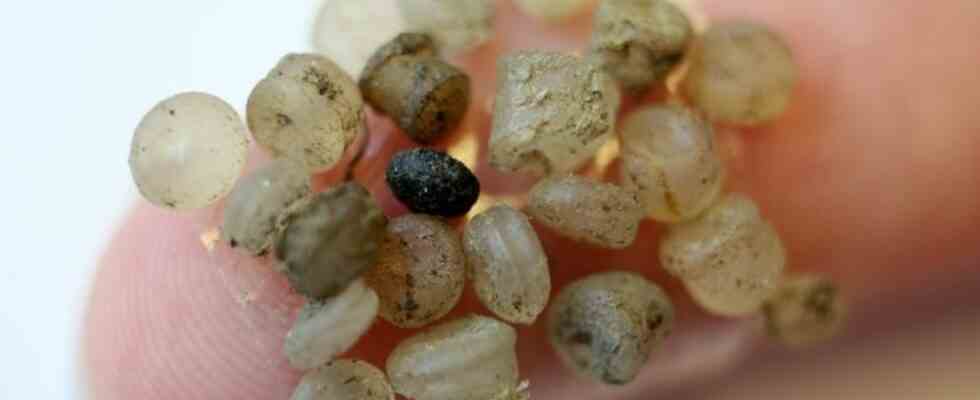environmental pollution
First study on microplastics in the depths of the Northeast Atlantic
Microplastic particles stick to an adhesive strip on a finger. Photo: Bernd Wüstneck/zb/dpa
© dpa-infocom GmbH
Small but dangerous: microplastics can transport toxins. Now it has been investigated for the first time to what extent the plastic particles also occur in deep water layers.
The Leibnitz Institute for Baltic Sea Research Warnemünde (IOW) has for the first time investigated microplastic pollution in the deep water layers of the Atlantic using a time series.
Janika Reineccius, IOW researcher and first author of the study, pointed out the danger of the small plastic particles in a statement: “Microplastics can absorb certain toxins and thus transport them over long distances, both horizontally and vertically. A wide variety of creatures eat such “poisoned” particles, which can also significantly limit the intake of usable food.»
Samples from the Azores observatory “Kiel 276” were examined – a 5.2-kilometer mooring line equipped with measuring instruments, which was installed halfway between the Azores and the island of Madeira in the north-east Atlantic. 110 samples were taken between 2003 and 2015, according to the IOW the researchers found microplastics in all of them. If you extrapolate the amounts found to the entire Atlantic Ocean, you get around 5.4 million tons of microplastics per year, according to Reineccius.
According to the study, the largest proportion of plastic waste that ends up in the sea is polyethylene with a good 70 percent, followed by PVC with a good 20 percent of the total amount found. The two types of plastic can be found in products ranging from pipes in building construction to surgical sutures, garbage bags or insulating material. “In order to recognize further patterns and processes more clearly, the long-term sampling must be continued, and actually we also need further sampling stations,” it said in conclusion.

